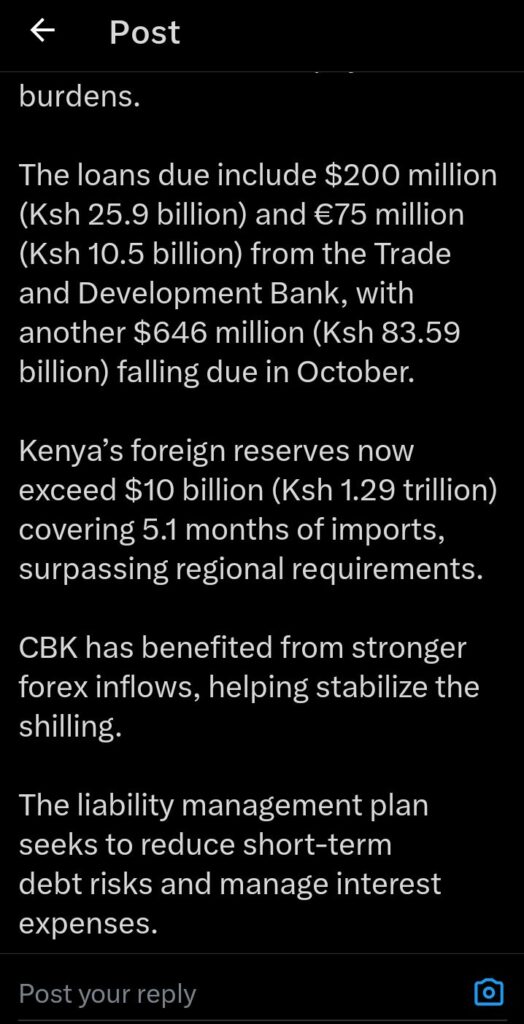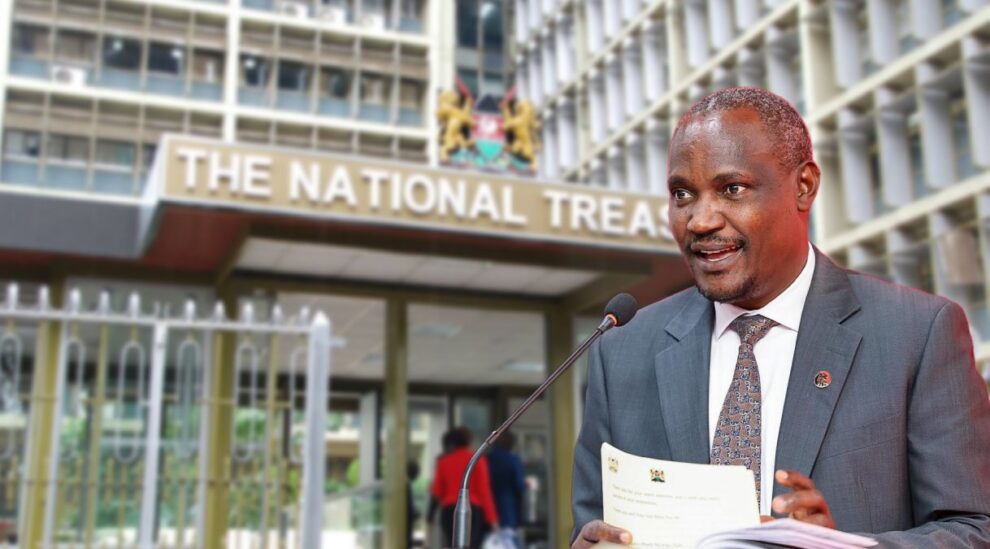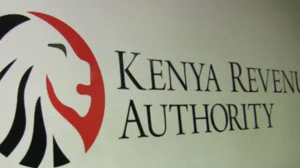Kenya’s Treasury has announced plans to use $880 million (Ksh 113.9 billion) from the recent Eurobond issuance to repay syndicated loans that are set to mature in September and October.
This move is aimed at easing the country’s short-term debt burden and reducing the pressure on future repayments. Treasury Cabinet Secretary John Mbadi revealed that Kenya has a total of Ksh 324 billion in syndicated loans, with Ksh 123.2 billion ($952 million) due in the coming months.
These loans carry high interest rates of 12-13 percent, making them costly for the country to service.Following the Eurobond buyback in February, Kenya was left with a balance of Ksh 119.1 billion at the Central Bank of Kenya (CBK), which was higher than the initial projections.

The Treasury has now decided to use a portion of these funds to clear the expensive syndicated loans. The government believes that by settling these high-cost debts, it will be able to ease financial pressures and create room for more sustainable debt management.
The loans that are due include $200 million (Ksh 25.9 billion) and €75 million (Ksh 10.5 billion) from the Trade and Development Bank.
Additionally, another $646 million (Ksh 83.59 billion) is expected to mature in October, adding to the urgency of repayment.Kenya’s foreign exchange reserves now stand at over $10 billion (Ksh 1.29 trillion), which is enough to cover 5.1 months of imports.
This level of reserves is above the minimum required in the region, providing some financial stability for the country. The Central Bank of Kenya has also benefited from improved foreign exchange inflows, which have helped in stabilizing the shilling.
The strengthening of foreign reserves and the stability of the local currency have been positive developments amid Kenya’s ongoing debt management efforts.
The government’s liability management strategy is aimed at reducing short-term debt risks and managing interest expenses more effectively. By repaying the syndicated loans using proceeds from the Eurobond, Kenya is trying to prevent a situation where it struggles with expensive loan repayments in the future.
The decision to use the available funds for debt repayment instead of other budgetary needs highlights the seriousness of Kenya’s debt situation and the need to take immediate measures to manage it.
While the Treasury’s move is meant to ease financial strain, concerns remain over the sustainability of Kenya’s borrowing.
The country has been relying on external debt to finance its budget deficits, raising fears that it may continue to accumulate more debt even as it repays existing obligations.

The high-interest rates on the syndicated loans further underline the financial strain Kenya faces. Managing debt effectively will require a long-term strategy that not only focuses on repayments but also reduces reliance on costly borrowing.





















Add Comment